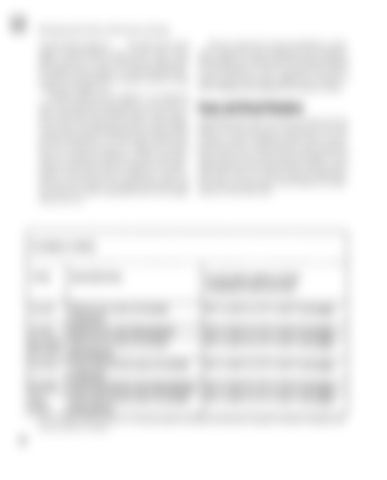POWERBOATER’S GUIDE TO ELECTRICAL SYSTEMS (continued from page 43) through with several tables to help decipher these secret codes. From ABYC section E-11 we see temperature-rating codes for flexible cords in figure 4-5, and insulation characteristics and temperature ratings for typical wiring conductors in figure 4-6. Another table, shown in figure 4-7 on page 48, shows the allowable amperage for various sizes of wires used inside and outside engine-room spaces. Notice that the amperage decreases inside engine rooms where expected temperatures are greater than outside temperatures. Use this table to determine the size of conductors for low-voltage DC systems only; AC wiring uses different criteria. The information on this chart must be compared to the information in the charts shown in figures 4-3 and 4-4. Always use the largest wire gauge indicated by the two charts for a given amperage based on the length of the wire run.
All wire used in DC circuitry should have a minimum rating of 50 volts stamped on the insulation. Most quality wire will have the AWG gauge embossed on the insulation as well. In general, wire sold as marine grade at the major supply houses will have a 105°C rating for the insulation, but it pays to check.
Fuses and Circuit Breakers Depending upon when your boat was built and who built it, you may have any combination of circuit breakers or fuses of different types used as circuitprotection devices. All such devices used on pleasure boats work on one of three basic principles, two of which depend on heat generated by resistance and a third that works on current-induced magnetism. Since fuses are easier than circuit breakers to understand, let’s take them first.
SO, SOW ST, STW STO, STOW, SEO, SEOW SJO, SJOW SJT, SJTW SJTO, SJTOW Fig. 4-5. Table VIII from section E-11, showing insulation markings and temperature ratings for insulation on flexible cords as used on board. (© ABYC)
46


































